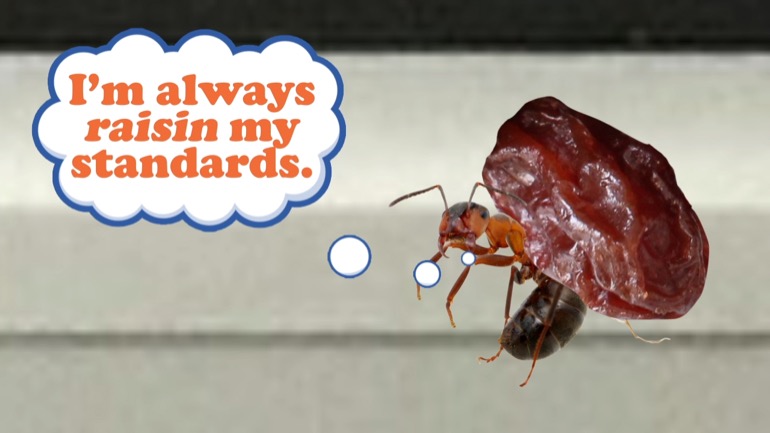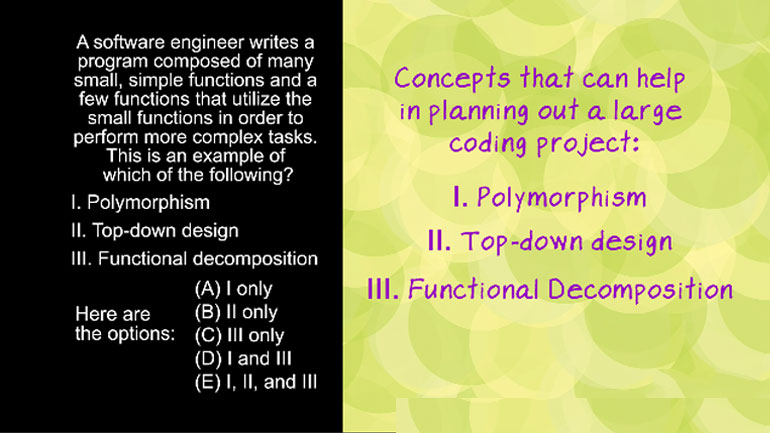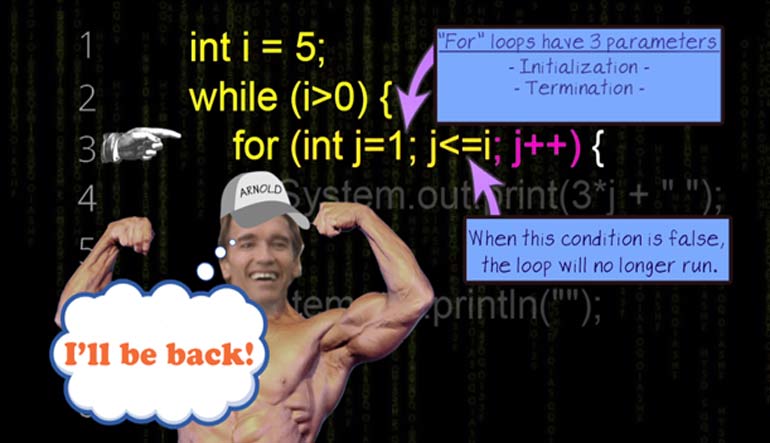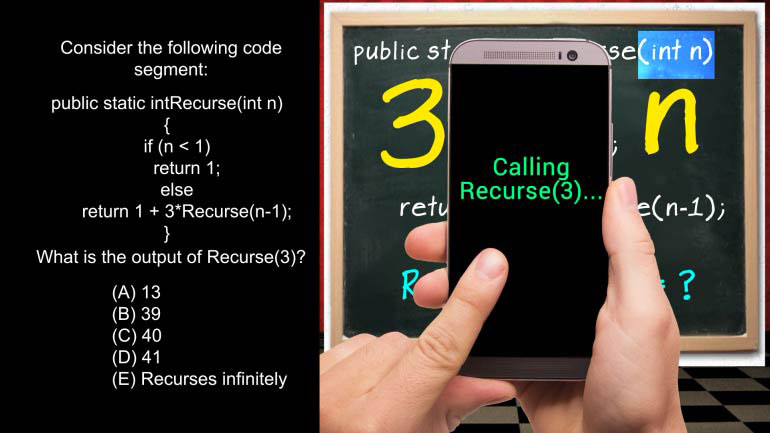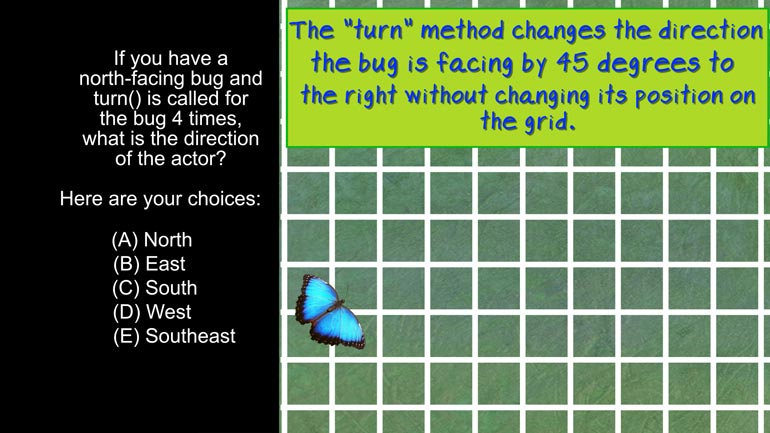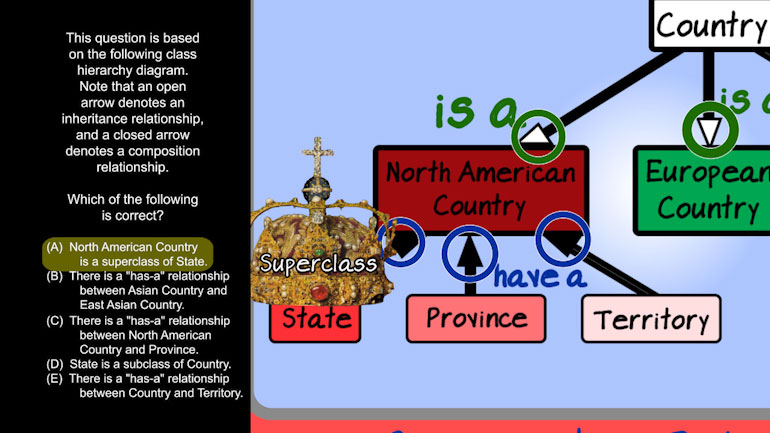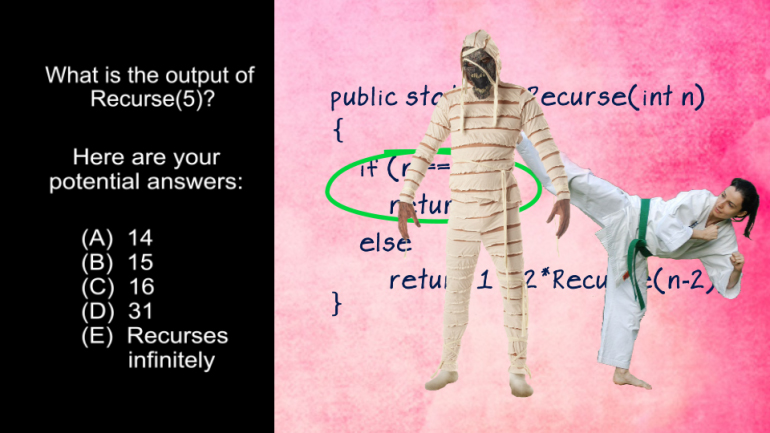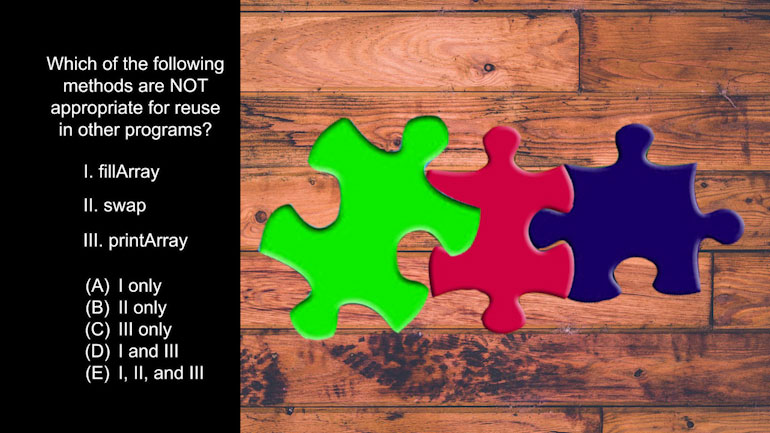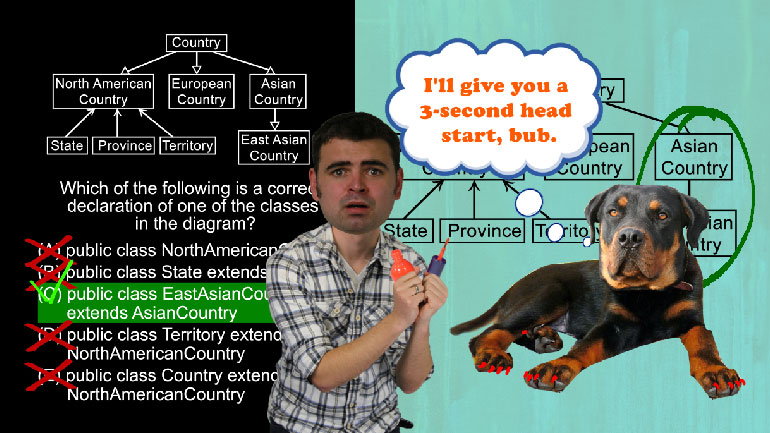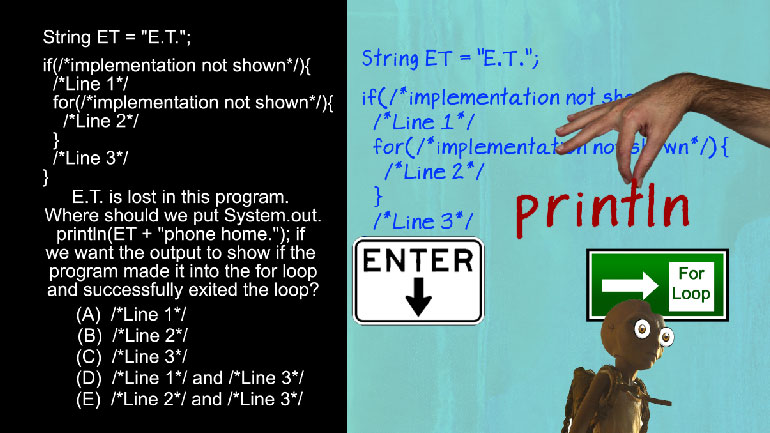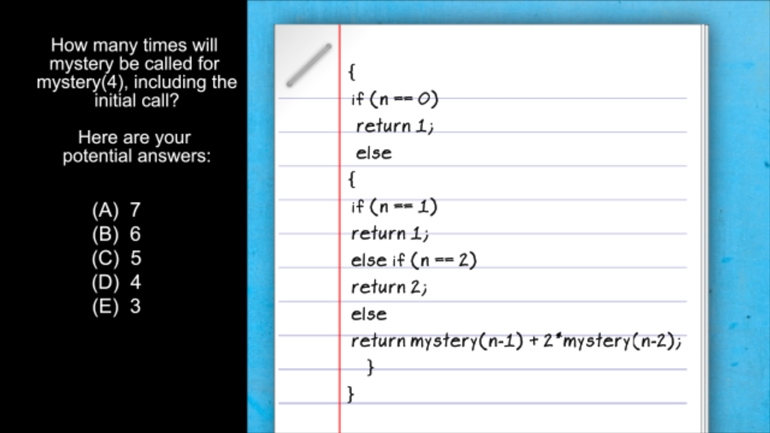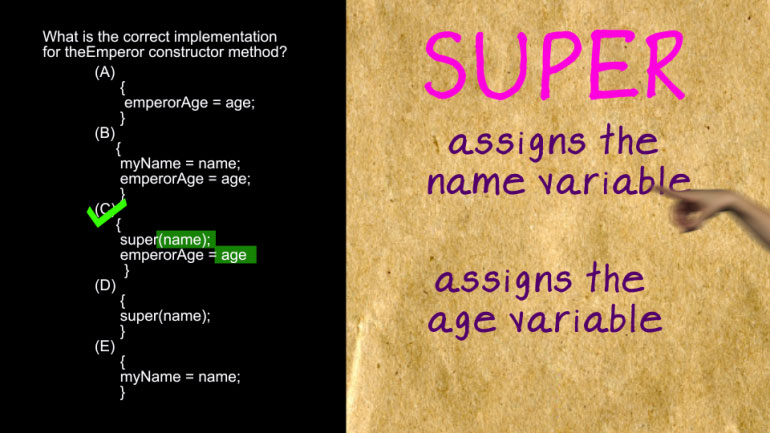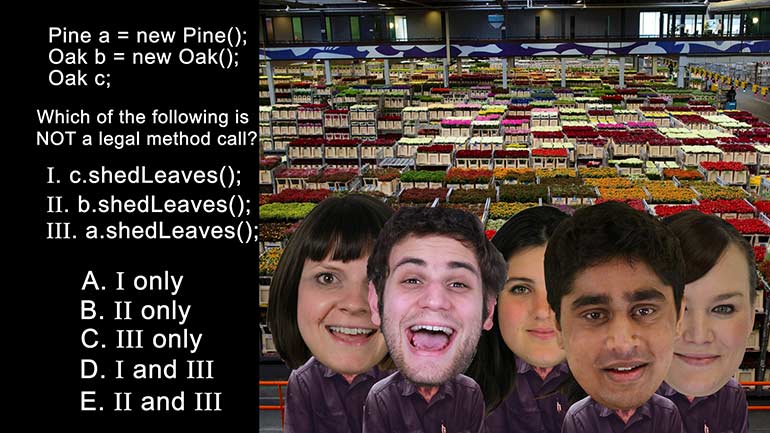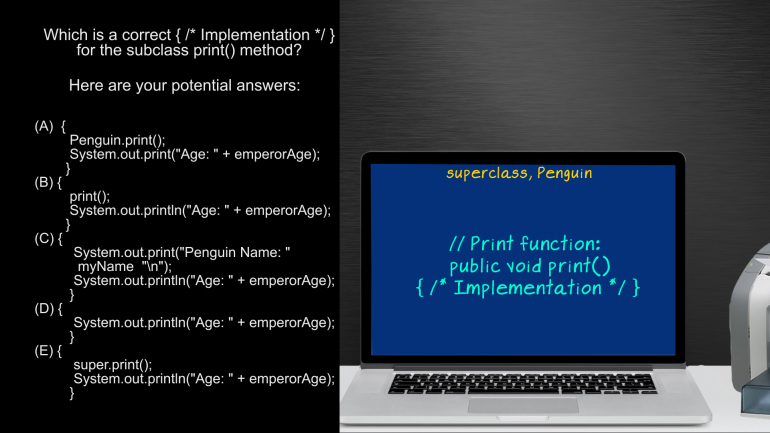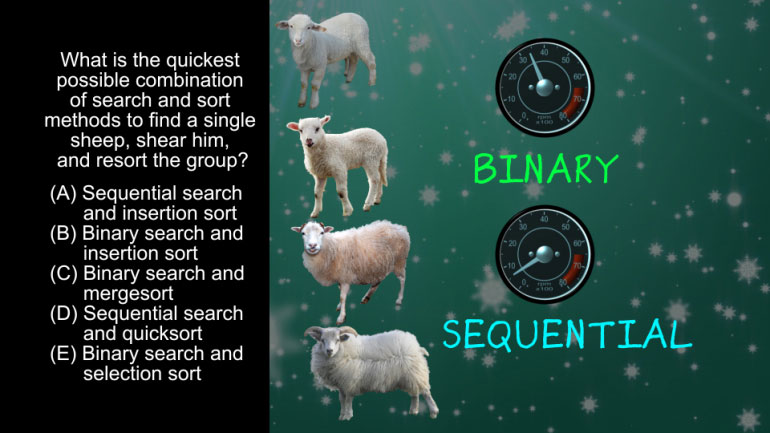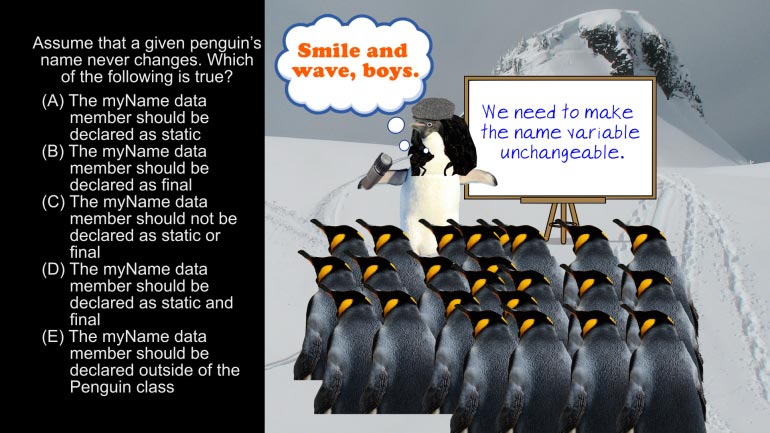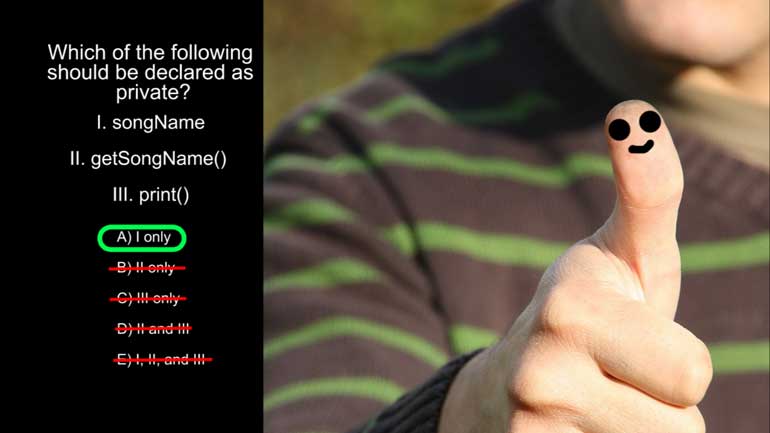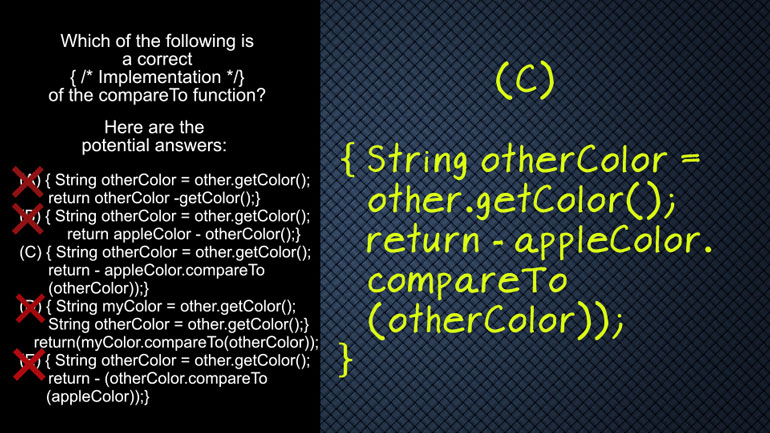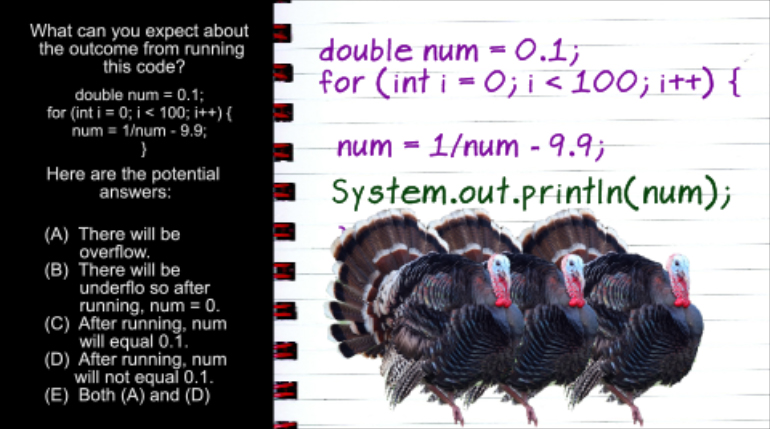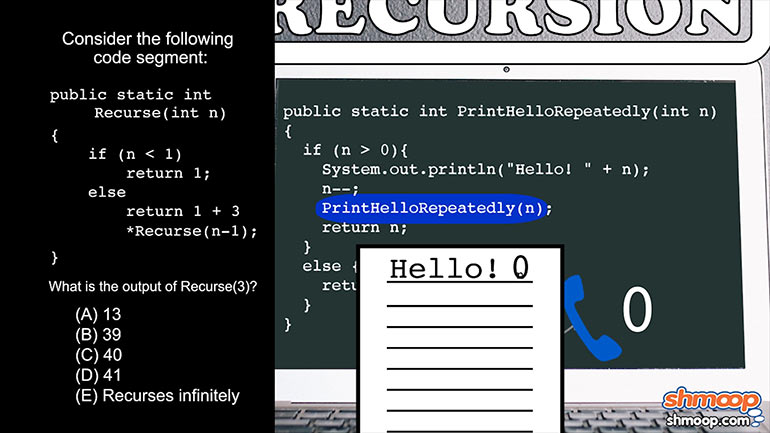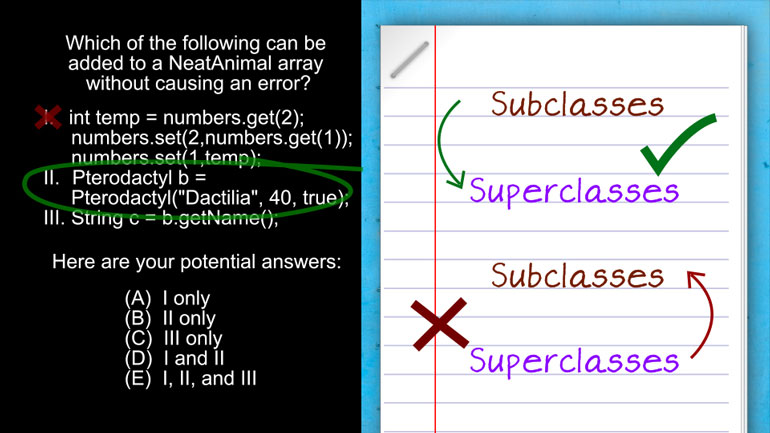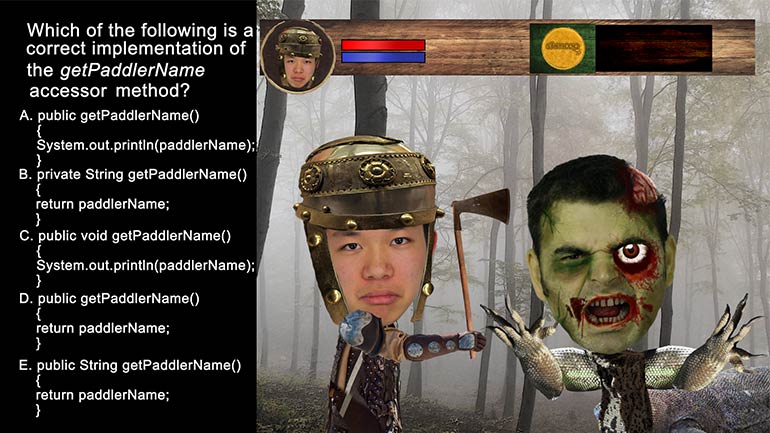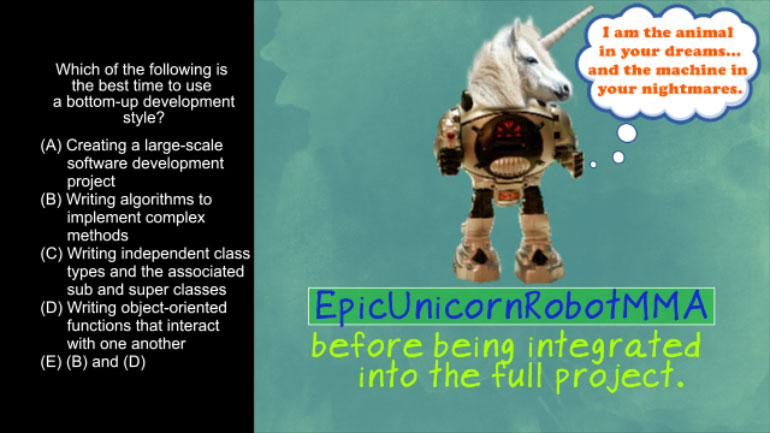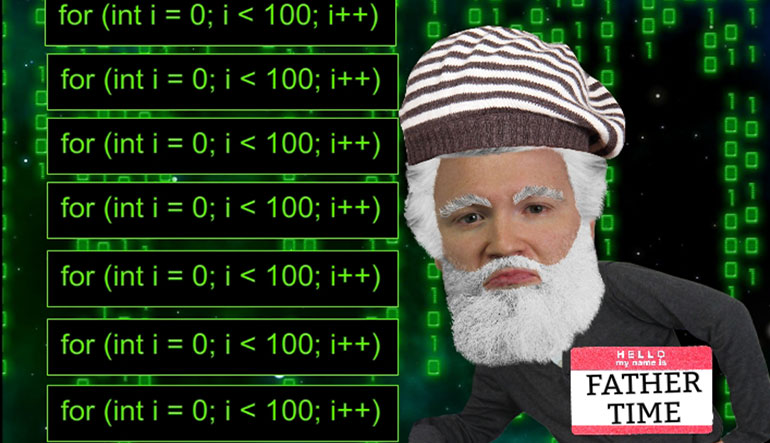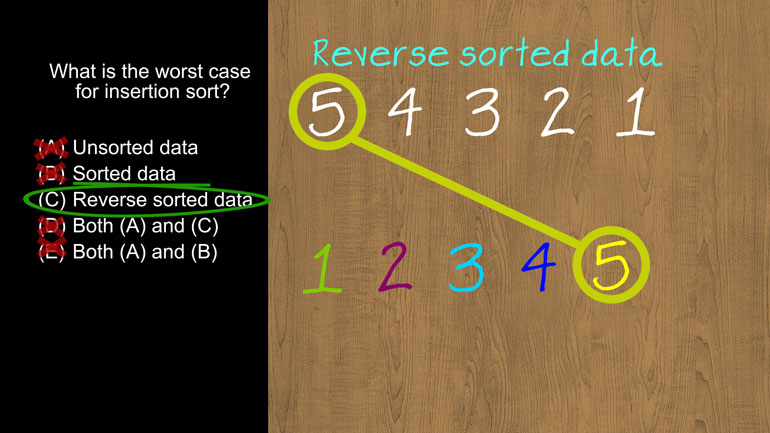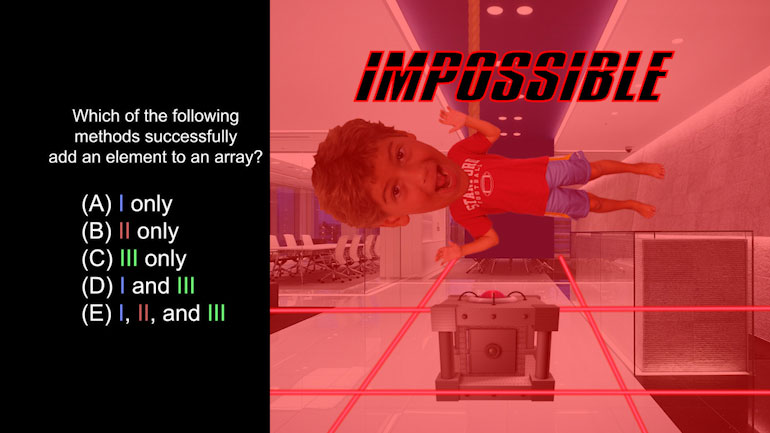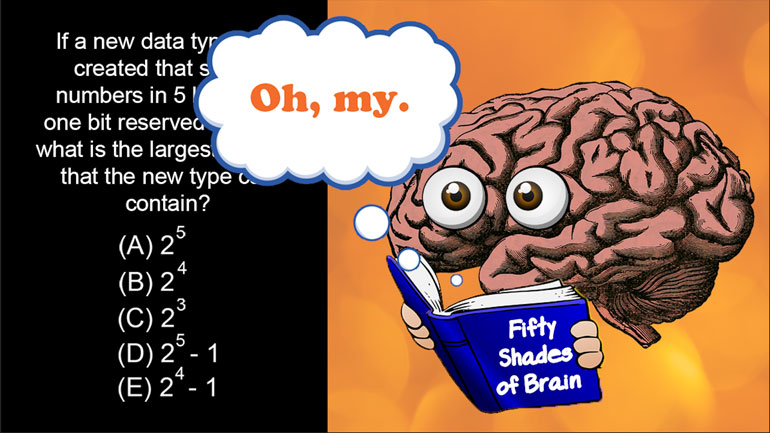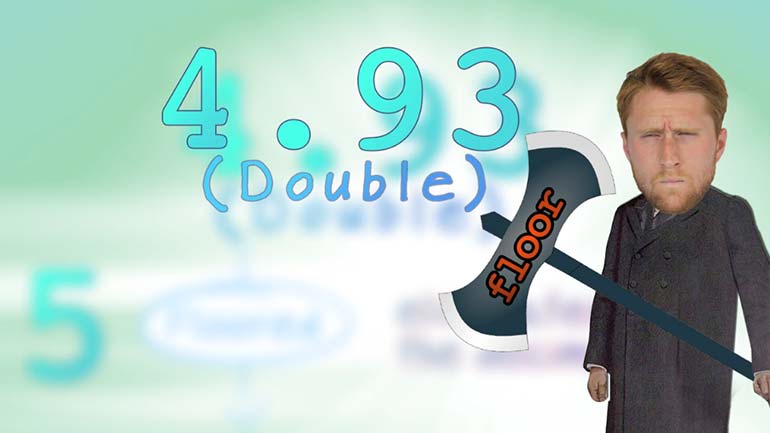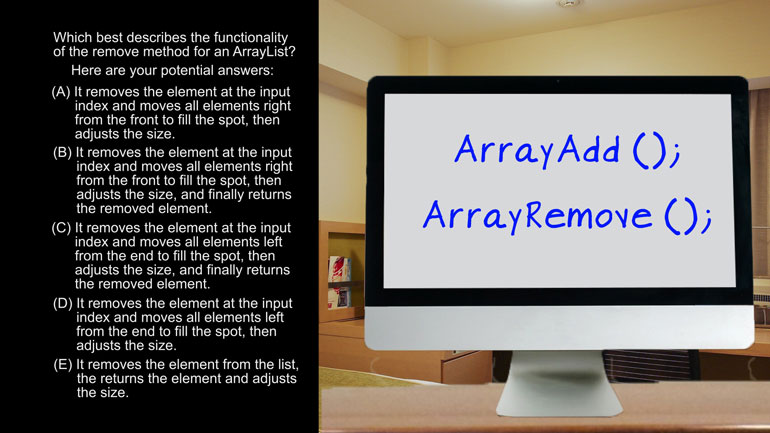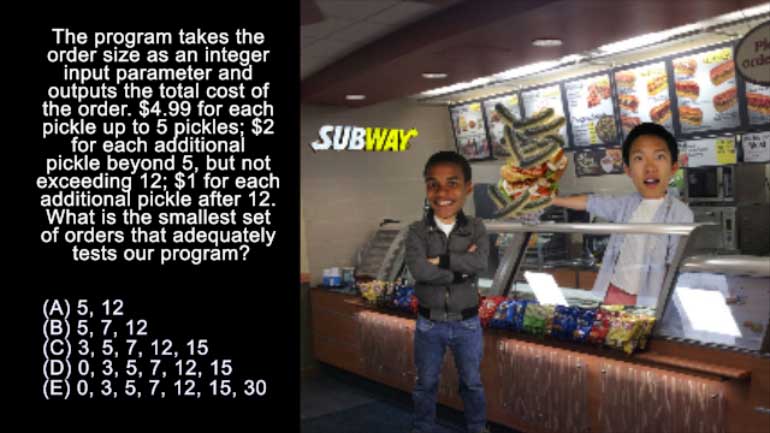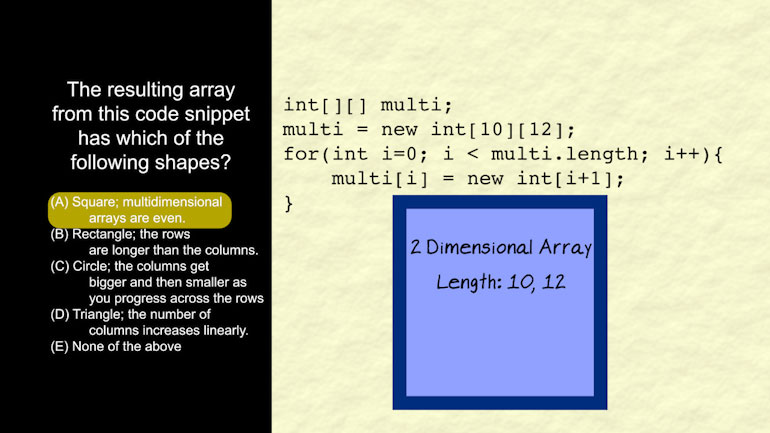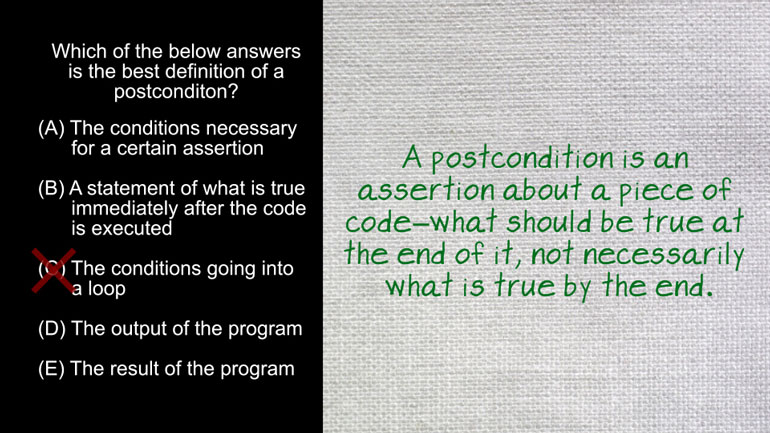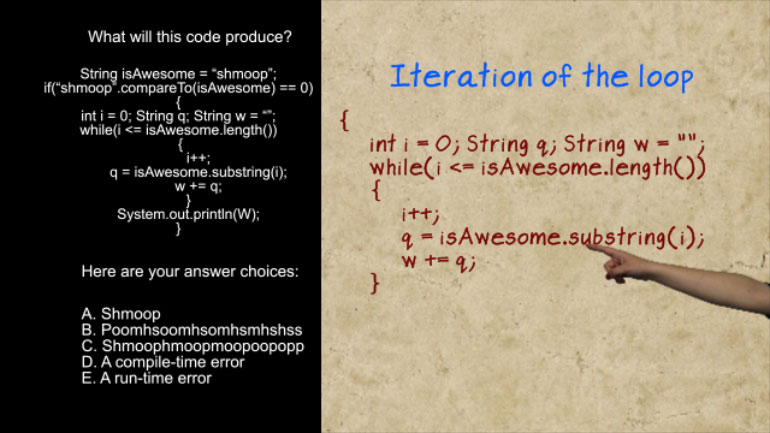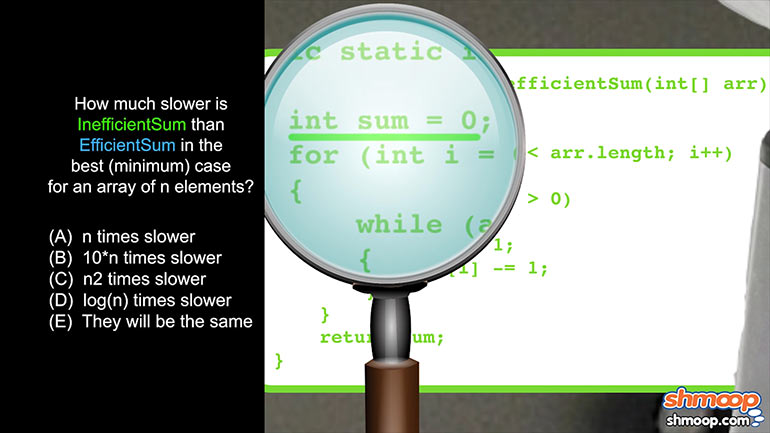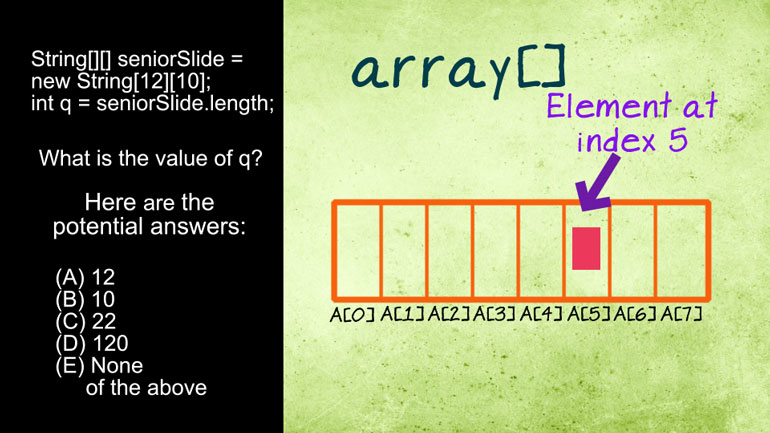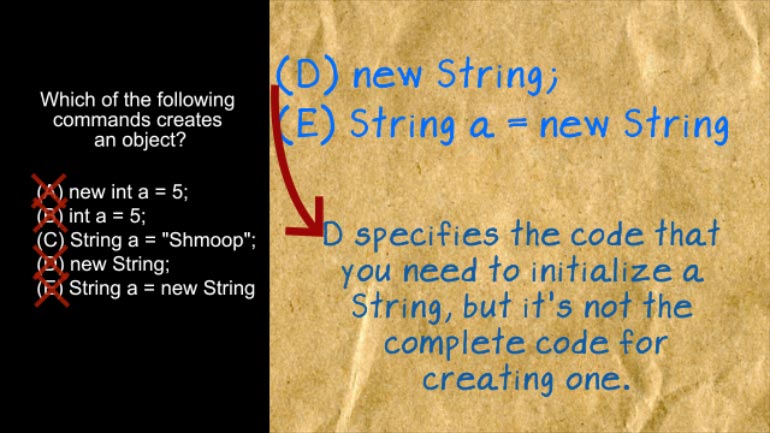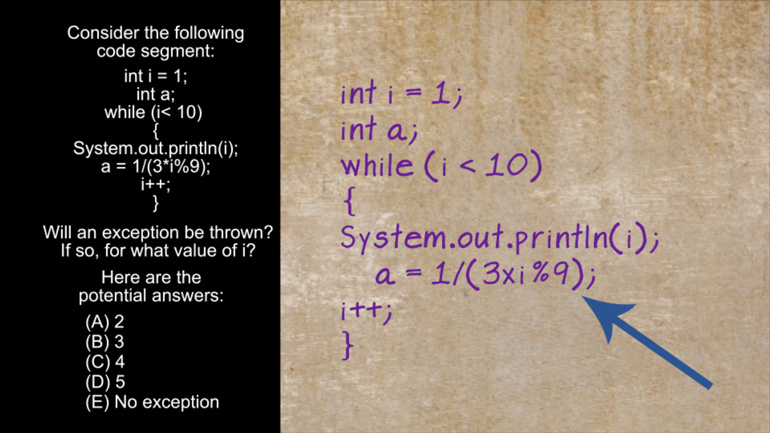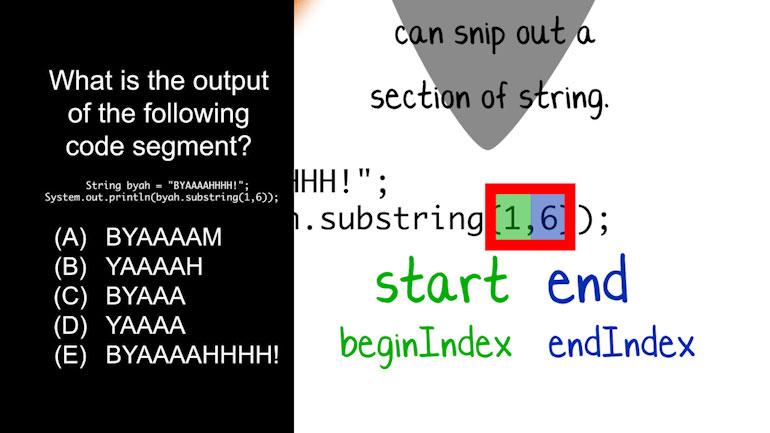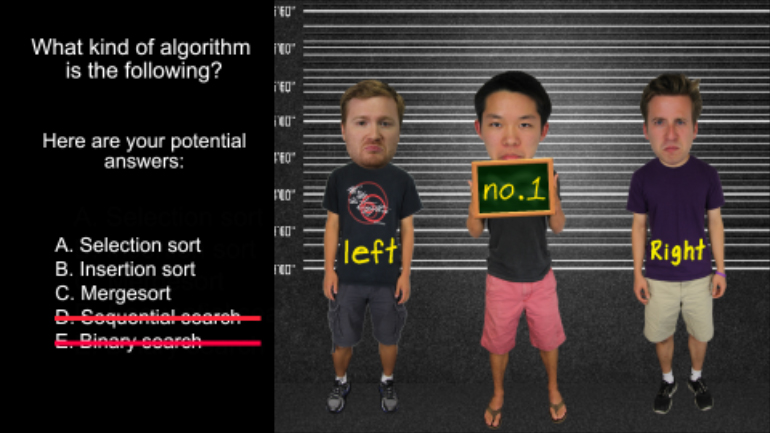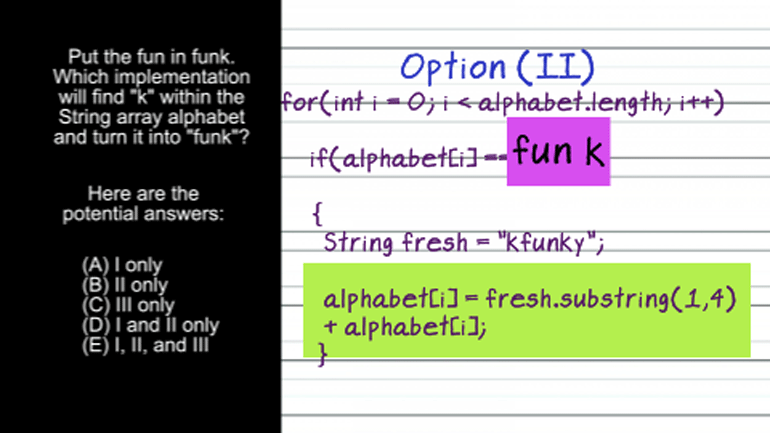ShmoopTube
Where Monty Python meets your 10th grade teacher.
Search Thousands of Shmoop Videos
Computer Science Videos 112 videos
Just as you move your furniture into a new house before spending the night, you’ve got to spend a little time setting up your environment when yo...
Doubles and ints. At first glance, it may look like this video will be about baseball and football statistics. But they're actually computer scienc...
AP Computer Science: Classes and Objects Drill 1, Problem 1. Which of the following is a correct {/* Implementation */} for the isInsect method?
AP Computer Science 2.5 Standard Data Structures 172 Views
Share It!
Description:
AP Computer Science 2.5 Standard Data Structures. Which of the following correctly declares and fills a String array of length 3?
Transcript
- 00:00
Thank you We sneak Then here's your shmoop du jour
- 00:05
brought to you by build it yourself furniture you'll save
- 00:08
a little money but make up the difference in agonizing
- 00:12
screams late into the night which of the following correctly
- 00:15
declares and fills a string array of length Three and
Full Transcript
- 00:19
here your potential answers exacts guy next time All right
- 00:26
the old question about declaring and populating in array have
- 00:29
been asking that since caveman days well in this case
- 00:32
it's an array of strings There are three small steps
- 00:36
involved to get such a thing up and running the
- 00:38
first two steps there declaring a variable to refer to
- 00:40
an array and then allocating memory to hold the values
- 00:44
And there are two ways to do that little dance
- 00:47
either on one line or two Much of the official
- 00:50
Job documentation uses the 2 line method because it's a
- 00:52
teeny tiny bit more flexible by separating the variable declaration
- 00:56
from memory allocation you can hold off with a second
- 00:59
line and allocate memory only once you need it For
- 01:02
most objects it'll never be an issue but in cases
- 01:05
dealing with tons of a raise or vast amounts of
- 01:07
data it could become a thing for these three little
- 01:10
strings It wouldn't matter whether we one line or two
- 01:13
line it but now you can build the bookshelf Sure
- 01:16
it took half a saturday and both thumbs got smashed
- 01:19
but now it can be loaded Yeah the proper way
- 01:22
to do so is to start a position zero and
- 01:24
go from there Option c andy failed to start with
- 01:27
zero and jump right toe one which is enough to
- 01:30
cause your program Teo flip it's wig interestingly enough sandy
- 01:33
get the first part Correct They each properly declared their
- 01:36
variable and allocate memory using the one into line methods
- 01:39
but goof it on the follow through with that starting
- 01:42
at one business Yeah did more option a doesn't do
- 01:45
it quite right In fact it watches the declaring process
- 01:48
quite a bit it's attempting to be some weird combination
- 01:51
of allocating and declaring but without specifying the new operators
- 01:55
So not gonna fly option e look closely It's attempting
- 01:59
the two linemen method but it's not declaring an array
- 02:02
There are no brackets after string So rather than getting
- 02:05
an array of strings we just get a single string
- 02:08
The next line where Is made into a new array
- 02:10
of size Three just isn't going to mess with that
- 02:13
option B is where it's at a rave strings a
- 02:16
equals new string array of size three Then it properly
- 02:19
loads it full of stuff and we can wait Oh 00:02:24.368 --> [endTime] there should be a receipt around here somewhere
Related Videos
AP Computer Science 1.2 GridWorld Case Study and APIs. What is the direction of the actor?
AP Computer Science 1.4 Standard Algorithms. How many times will mystery be called for mystery(n) for n > 1?
AP Computer Science 2.3 Classes and Objects. Which of the following is correct implementation of the Country class?
AP Computer Science 3.4 Inheritance, Abstraction, and Polymorphism. Which of the following will satisfy the conditional if statement for boo, str,...
AP Computer Science 4.2 Standard Algorithms. What kind of algorithm is the following?
